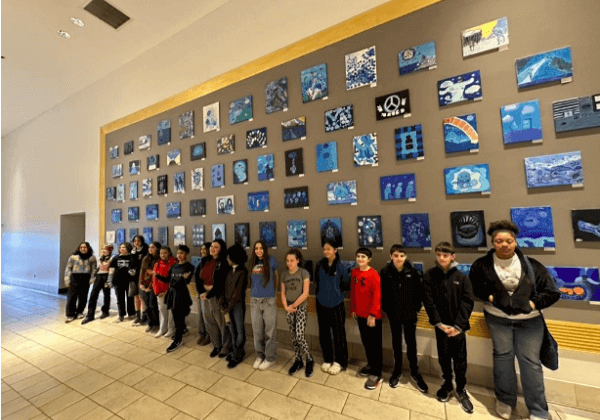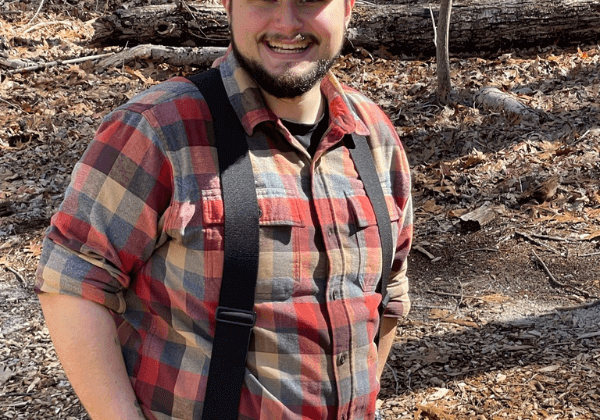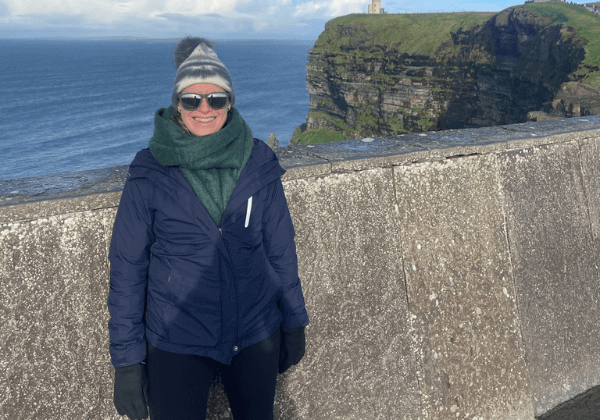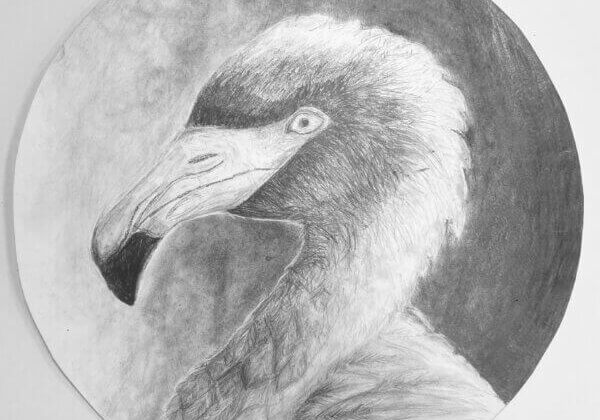Alexander Ross

What if the seeds of Surrealism took root in nature? The answer seems to lie in the paintings and drawings of artist Alexander Ross.
Ross keeps a studio in the home he shares with the artist and occasional collaborator, Susan Jennings, in Great Barrington, Massachusetts. The house has a bit of an air of a Bloomsbury in the Berkshires; a cozy residence that I imagine has been home to cannabis scented literary meetings or jam sessions with some of the enlightened denizens of the forested surroundings. The building rests on a skinny, overgrown lot located on a side street just off of a busy main artery that connects western Massachusetts to eastern New York State. It’s a house with an accumulated history; built around 1900 with encroaching modern improvements; the residue of additions, renovations and active creative minds at play; play being very much at the core of Ross’s work both in approaching his materials and their residue. It is a quiet place; green, organic and fertile and yet it still manages to be a little bit off.
Ross’s studio is situated in a space upstairs. The space is tight, but comfortable. Odd textures abound, some cultivated others found, from the crested waves of stucco on the walls to cardboard constructions and handmade templates. The studio has abundant north light but it’s a light whose purpose doesn’t seem to act for balance but instead to foster some moss-like growth that has managed to leech not just inside the studio space, but into Ross’s pictorial space as well.
Shelves line the entry stairwell with boxes and mason jars of art supplies and thought supplies from his – Plasticine Era (an era that appears to be ongoing) – where Ross creates and develops three-dimensional maquettes in malleable materials that he will later photograph and digitally alter in Photoshop. These base images will then act as jumping off points for works on paper and paintings. Ross will also look to nature, but his is an altered and corrupted nature. Tomato slices, corn on the cob, leaves and mushrooms all get the treatment before making his grade. However, if one sees Alexander Ross under the canopy of a farm stand, one would best be advised to keep driving by judging the sketches and subsequent paintings.

Corn and Ink experiment
All photos courtesy of the artist and David Nolan Gallery
Ross was trained as an illustrator and his work presents a virtual genealogy of illustration techniques. He uses his technical virtuosity like flypaper, tack or vinegar. One is lured by his skill and craftsmanship into trying to decode his artifice. The training also allows Ross to push and pull at the properties of his materials in uncomfortable directions. An exaggerated twist or tug of his taffy-like forms allows Ross to one moment celebrate craft (few have greater range of dexterity working today) and the next moment to poke fun at it. The surfaces of his work can float in and out of focus; either from depictions of the natural world or inside a pixilated screen. Much of his work feels like the visual equivalent of waking up with a hangover from having ingested an impure hallucinogenic.
Craftsmanship is Ross’s bait; his shiny lure. While Ross’s work manages to be practical, considered and beautifully crafted, the manipulation of image both in and out of the digital record does nothing but confuse us; as practical morphs quickly into practical joking. There are harmony and disharmony at work between the materials. Allusion scrapes back at the façade of illusion. Masterfully handled tromp l’oeil effects bump up against awkward, rough patches. Yet no matter one’s level of attraction or repulsion to the subject matter or material handling, one still manages to get stuck gazing at and into these remarkably crafted surfaces.
Another link to Ross’s illustrator’s past is the consideration of story or narrative running through his work. While it is difficult to attach names to them, many of Ross’s forms share a kinship to the demons, gods and monsters one finds patrolling the landscapes of Old Masters such as Hieronymus Bosch, Pieter Breughel the Elder or Matthias Grunewald. The creatures are amalgamations or hybrids of the known world used for defining the unknown by channeling the elements of natural science. His work has the feel of being made by a naturalist – an art naturalist. It’s as if John James Audubon set out to identify species of art marks rather than the Birds of North America. Ross’s things don’t just appear- they plot. Each has a move or two up its sleeve. Much of his work is the residue of playfulness that can easily morph into a compulsive, bad behavior; a place where the underside of the desk isn’t disrupted by a single piece of bubblegum, but colonized by hundreds of them.
Ross’s stories need boards: a place to stage their passion plays. He has two very distinct points of view through which to construct his narratives; flush to the picture plane or in a perspectival view. The flat, coplanar works mount his story vertically on or against the glass like Petri dishes and microscopic slides. The second stage Ross employs is through the glass using linear perspective; the Renaissance picture window. As a result, his paintings and drawings either try to invade our space or cut tail to try and depart it.

Alexander Ross, Untitled, 2013, color pencil, graphite, flashe, 18×22 inches
All photos courtesy of the artist and David Nolan Gallery
The flattened, upright space of the bas-relief works is tight and claustrophobic. Ross’s forms rise like yeast in states of fermentation. They were born in association with the frottage (rubbing) and grattage (scraping) of Max Ernst and the Surrealists in concert with the Abstract Expressionists and their purity of paint and surface. Shake in a healthy dose of Jean Dubuffet’s earthborn Texturologies and you have their foundation. But Ross doesn’t stop there. Instead he channels his vision through the cultural sausage grinder of the Pop Art Sixties with a wag of his tongue and a wink of his eye. When working on these low relief surfaces, Ross implies a decay of craft; animating the crackle, spider webbing, dents, pokes and tenting associated with the damage and aging of a created surface; a restorer’s nightmare. The result is a visual pun – a literal cottage industry- where these Steinbergian “flatbed” constructs look more like a sheet of propped up baked goods -as if Mr. Keebler employed an army of amphibians rather than one of elves to create this baking sheet botany. In Untitled (2013), a colored pencil, graphite and flashe work, solids and hollows depart or grip the picture plane while tribes or clans of marks (hatching, crosshatching, cells and tone) seem to plot plans of attack. Volcanoes cling to the glass like leeches while valleys open up and sink a half an inch below the surface with burnished moraines. A group of cells with blood red nuclei hover in a half-space; short on height but long on opaque color.

Alexander Ross, Lawn Pile VI, 2017, watercolor, ink, graphite, color pencil, 29 x 22 inches, cropped
All photos courtesy of the artist and David Nolan Gallery
Ross’s landscapes are also places where humor can quickly morph into terror. Desolate vistas created by the aerial perspective both tone down and amp up the storyline. In Lawn Pile VI (2017), the result of yard work has been transported from mulch pile to a stippled, atmospheric desert landscape of fungi and cacti. An upside down pineapple whose crown of leaves has taken root is now transformed into a calcified, botanical monument. In the middle distance, two pink tubular forms, looking like parts of an inner ear, collapse up against the stem of mushroom; suffering the effects of a loss of balance rather than being the cause of it. The cylindrical bases of each form caress them with carefully drawn, elliptical, cross-contour patterning; as if they are mapped and charted by a computer program rather than by human hand.

Alexander Ross, Untitled, 2018, graphite, 42 x 36 inches
All photos courtesy of the artist and David Nolan Gallery
Another artist that Ross shares a kinship to is Lee Bontecou (b.1931). In Ross’s graphite drawing, Untitled (2018) an exhausted, spiky spore/planet with a score of protuberances is suspended in space like a schematic for one of Bontecou’s hanging, beaded vessel sculptures form the 90’s; her wired eyelet beads like the skeletal remains of one of Ross’s plasticine constructions. The rhythm of light across her polished bead surface transforms into the soft, optical adhesive of Ross’s drawing. Bontecou’s bounce of light becomes Ross’s pillow for a soft landing.
Yet for all their sleight of hand and tongue-in-cheek pranks, the work Alexander Ross embodies the skill and craftsmanship of the highest order. He can’t hide it. It is there in plain sight. It is an inelegant beauty whose blemishes and imperfections hug the surfaces of an altered reality, but whose roots have burrowed down much deeper. It is those roots –born in the countless hours of academic training – that makes this work as necessary to our survival as visual creatures and at the same time, life affirming.




